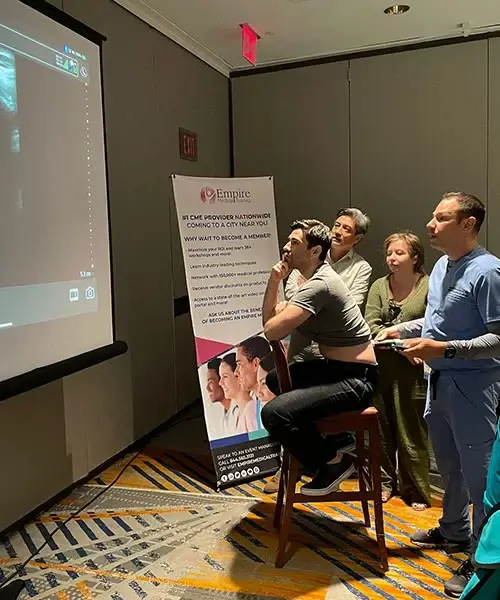Is Spinal Manipulation Therapy an Answer to Your Back Pain? What You Need to Know
By Dr. Stephen Cosentino
PRESIDENT OF EMPIRE MEDICAL TRAINING
Millions of Americans suffer from chronic back and neck pain. Many seek spinal manipulation therapy (SMT) for short- and long-term relief.
But does it really work? There’s considerable debate about the effectiveness of spinal manipulation. If you’re considering it, here’s what you need to know about how it works, how it performs in randomized controlled trials, and what, if any, alternatives you should look into.
How Spinal Manipulation Therapy Works
Spinal manipulation is the most common type of chiropractic adjustment treatment. It’s also known as High Velocity Low Amplitude (HVLA) manipulation.
The spinal adjustment process works as follows:
- The chiropractor positions the patient on a table or stabilizing structure.
- The chiropractor applies a controlled sudden force to a specific area of the back or neck, often resulting in an audible “popping” sound.
- The chiropractor repositions the patient and reapplies force as necessary.
There are several types of spinal manipulative techniques, each focusing on a different area of the spine:
- Lumbar spine (lower back)
- Thoracic spine (middle back)
- Cervical spine (upper back and neck)
Efficacy of Spinal Manipulation
Studies suggest that high-quality spinal manipulation can provide short-term pain relief in the targeted areas.
The most promising evidence indicates that the technique can effectively treat chronic low back pain and cervical spine pain for periods measured in weeks. However, follow-up adjustments may be required to maintain results, potentially at significant cost to the patient.
The evidence is less clear on whether the results are significantly better than alternatives like physical therapy, manual therapy, and lower-impact chiropractic techniques like spinal mobilization. There’s also limited evidence on whether spinal manipulation effectively treats other complaints for which it’s indicated, such as chronic headache (migraine and tension) and sciatica.
Fortunately, while the evidence for its efficacy is mixed, serious side effects are rare in spinal manipulation patients. Lasting injury occurs only in a tiny number of cases. Stroke can occur after neck manipulation, but the overall risk is extremely low.
Alternatives to Spinal Manipulation
There are several alternatives to spinal manipulation. The observed efficacy varies; some are regarded as more effective while others have limited, if any, evidence.
Spinal Mobilization
This is a lower-impact type of manual back therapy that’s also typically delivered by chiropractors. The practitioner applies less direct force to the affected areas in favor of stretching or extension exercises. They may also use a special tool called an activator to apply force to one vertebra at a time.
Physical Therapy
This is a non-chiropractic approach that typically involves repetitive, low-impact exercises supervised by a trained physical therapist. Physical therapy training is a years-long process, so these practitioners know what they’re doing, but some patients prefer to work with chiropractors who train for even longer.
Back or Neck Surgery
Surgery may be the best option for patients with debilitating back and neck pain that won’t respond well to less invasive treatments. It’s often appropriate when the underlying cause is a physical obstruction or abnormality, such as a calcium deposit or tumor. However, it’s by far the riskiest option and has the longest recovery time, even when minimally invasive techniques are employed.


